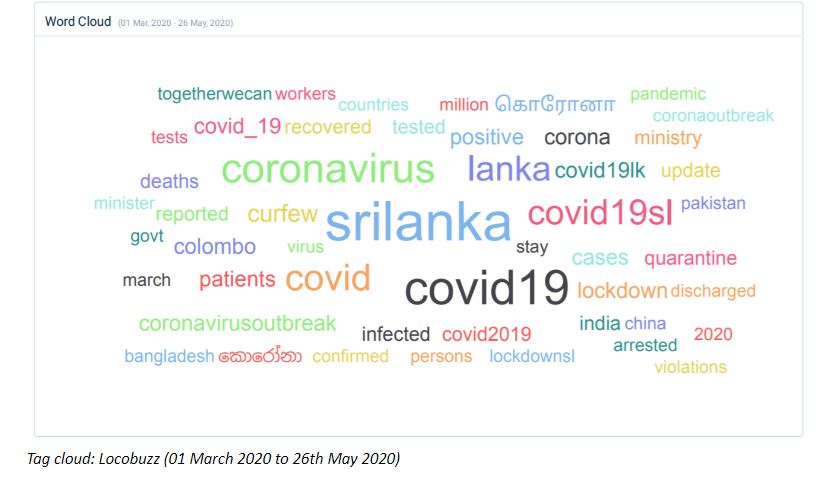A Case Study on Social Listening during COVID-19
As we know, when the whole island went on complete lockdown, everyone was gearing up for a life at home. With everyone staying at home, many were drawn towards the internet to keep themselves entertained. And this paradigm shift was fueled by limited to no new content on traditional terrestrial TV channels.
This shift of people gravitating towards the internet to keep themselves occupied has eventually created a gold mine of data over time. This was a lightbulb moment for our data scientists at Digital X! They immediately wore their thinking caps on and started working on understanding how the novel coronavirus (Covid-19) impacted the general population by studying online data. Using their social listening tool ‘Locobuzz’, the team got on to monitoring all key social media channels.
The key areas of focus were to understand the general sentiment and thoughts of the general public. Besides, the team also wanted to understand the general concerns of the masses such as health issues and other related topics. The social listing tool Locobuzz was deployed on the 1st of March 2020 and the following insights were gathered by the team’s data gurus.

The above graph shows that the general public had an overall negative sentiment towards Covid-19. When comparing this data with reported cases, it was seen that the online chatter directly related to the number of cases in the country. The report’s 4th-week data (produced around the 15th of March) showed an average of about 10 Covid-19 positive cases in Sri Lanka. The second spike occurred around the 10th week (around the 26th of April) and it is during this time where a new cluster of Covid-19 cases was found within the Sri Lanka Navy. Therefore, it was quite clear that the number of reported cases had a direct influence on how people felt about Covid-19.
Below is a representation of the keywords which were widely used during the corona pandemic in Sri Lanka. This highlights the key topics people were interested in talking about during the lockdown period. Though most of the conversations were directly related to Covid-19, there were also other positive keywords such as “together we can”, “worker” and other health workers related keywords.

With this information in hand, the enthusiastic team set out to investigate the reason behind the overall negative sentiment among the public. One of the hypotheses was that rumors were affecting how people felt about the pandemic. It was seen as a key influencing factor for the overall negative sentiment.
To test the presented hypothesis, the Digital X team dived into more segmented data and below is a sample representation of the data which was used to analyze the hypothesis. By paying special attention to comments (Represented by Title) and validating the statements with credible sources such as WHO and Health Promotion Bureau, the team was able to confirm that there is a direct and positive relationship between rumors and negative sentiments. Therefore, the hypothesis was proven.

Based on the gender segregation data, it’s seen that more males were online compared to females and the findings showed a clear % difference between negative and positive sentiments shared by both genders. In fact, these results correlate with several international research studies as well.

Observing the user activity levels, the team also found that most people were online on Friday, closely followed by Saturday and most of them were active frm 6 pm till 10 pm.

As the next big step, prepared with all this information the Digital X team reached out to a leading government agency that was directly involved in curbing the Covid-19 outbreak. As a direct result of the collected data, the agency implemented a digital strategy to reach the target audience at the peak time and day they were online. This helped them reach more people organically and were also able to focus more on the female segment since the data showed that they were more worried about the pandemic.
Although the most challenging stage of the pandemic is somewhat over, it is important to remember that we can flatten the curve together as a nation. The Digital X team is still successfully continuing the social listening analysis and this will help relevant authorities to combat the pandemic with the use of emerging online trends. The real-time data and insights gathered help understand where, when and who are affected by the pandemic in Sri Lanka.
If you want to learn more about this analysis or have something to share with us, you can reach out to us by clicking here. Our team at Digital X would love to hear from you and be happy to help you!
